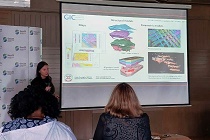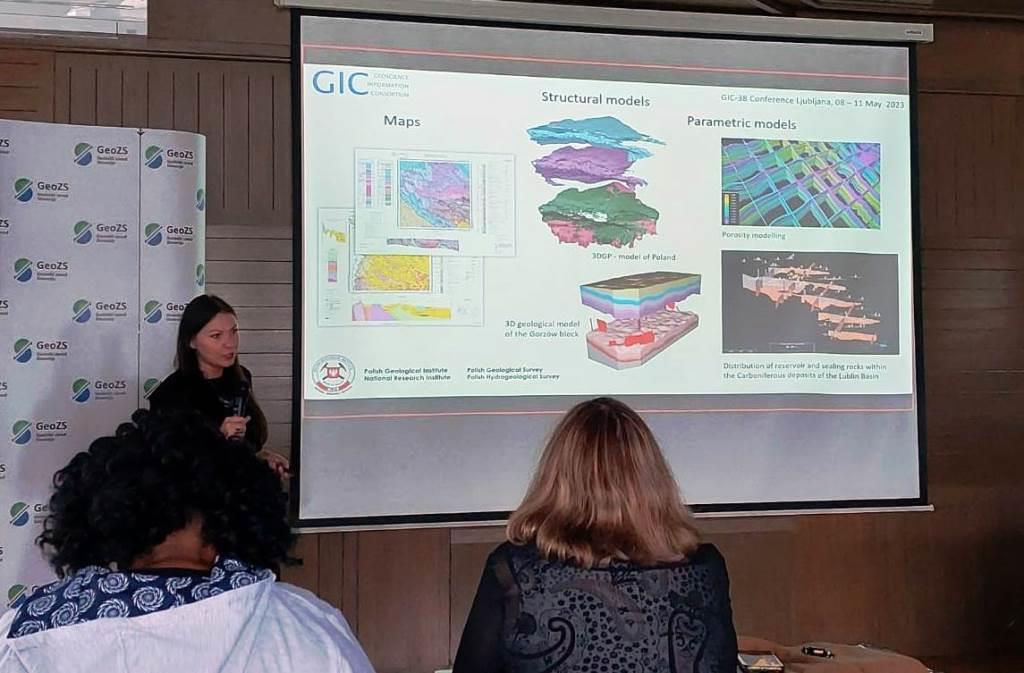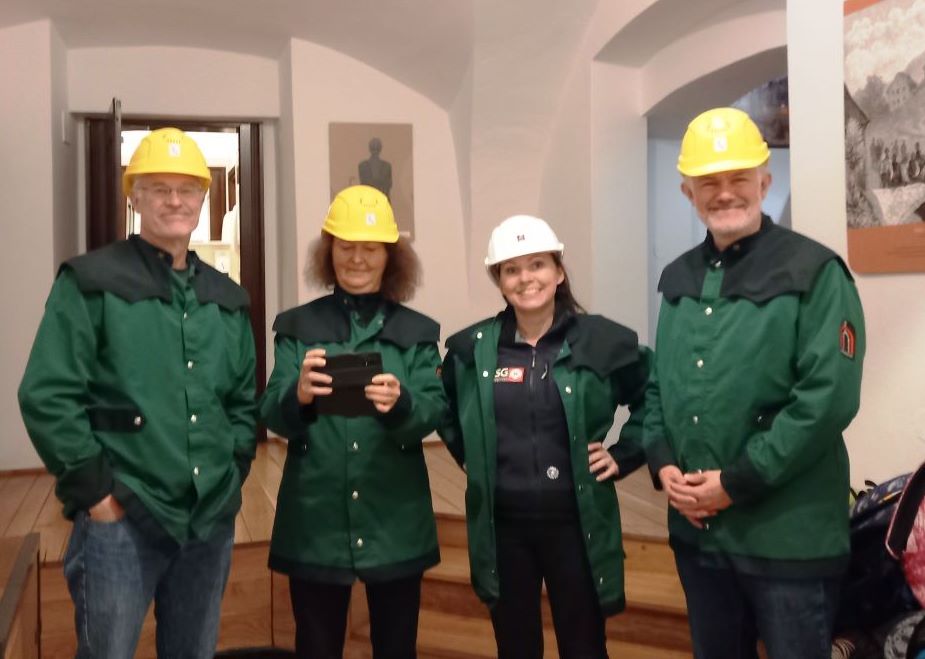 On 8-10 May 2023, the 38th Conference of the Geoscience Information Consortium (GIC) was held at the headquarters of the Geological Survey of Slovenia (GeoZS) in Ljubljana. The aim of the Consortium is to exchange 'know-how' in the use and management of geological information systems between geological service organisations worldwide.
On 8-10 May 2023, the 38th Conference of the Geoscience Information Consortium (GIC) was held at the headquarters of the Geological Survey of Slovenia (GeoZS) in Ljubljana. The aim of the Consortium is to exchange 'know-how' in the use and management of geological information systems between geological service organisations worldwide.
The annual GIC conference provides an important forum for the various geological services to discuss the challenges of the digital age in the geosciences, as well as to present their activities and report on current developments in the sector.
During the meeting, the Polish Geological Institute – PGI was represented by:
- online: Deputy Director for the Geological Survey Dr. Andrzej Głuszyński and Piotr Gałkowski from the Systems Maintenance and Development Department,
- in person: Katarzyna Jóźwik from the Department of Geological Cartography.
The first day of the meeting in Ljubljana was dedicated to the discussion about the activities and latest developments of the hosting GeoZS. There were presentations related to the Geological Survey of Slovenia's participation in the EPOS project (European Plate Observing System) and the integration of geological data from field observations into the Slovenian EPOS research infrastructure, as well as presentations on the prevention and detection of a wide range of geohazards, including those related to water, landslides or rockfalls.
Most of the second day of the meeting was taken up by a session during which reports from individual geological services were presented. Achievements of specific units, major projects carried out, problems faced by the services and development trends and plans for the future were presented. A total of 21 presentations – reports of geological surveys, from countries such as Denmark, Australia, Austria, China, the Czech Republic, France, Hungary, Ireland, the Netherlands, Norway, Portugal, Romania, Poland, Slovakia, Slovenia, South Africa, Spain, Sweden, Switzerland, the United Kingdom and Germany – were given.
At the request of the Executive Secretary of the GIC and the host of the meeting, Jasny Šinigoj, the session was chaired by Katarzyna Jóźwik from PGI-NRI.
From the reports presented at the meeting, it is clear that the geological surveys of many different countries are grappling with similar issues and challenges in the context of geo-information and GIS in the broadest sense, including the generation, processing, collection, exchange and sharing of spatial data and the creation, use, maintenance and development of the necessary systems and applications for this.
A significant part of the meeting in Ljubljana was dedicated to topics such as modern technologies, geological data standards and the different roles played by geological surveys – with relevant thematic sessions in the afternoon of the second and third days.
In agreement with the leader of the PGI-NRI geological modelling team, Dr Ewa Szynkaruk from the Department of Geological Cartography, Katarzyna Jóźwik presented the PGI-NRI geological model viewer 'Geo3D viewer'. The presentation consisted of several introductory slides and a demonstration of the operation of the online viewer. It was prepared at the earlier request of the GIC Steering Committee, as the sharing and standardisation of 3D data is nowadays one of the popular topics among the community of geoinformaticians/GIS and IT specialists, also in the context of current European and global projects.

Katarzyna Jóźwik presents types of geological models prepared at PGI-NRI
Questions from the GIC participants about further development of the Geo3D viewer at PGI-NRI and possibilities of presentation and export of data were answered by Ewa Szynkaruk, who participated in the thematic session online.
At the end of the third day of the meeting, the internal affairs of the GIC related to the management of the Consortium and the activities of its branches, the Nordic GIC and the CE-GIC, were discussed. New candidates for the GIC Steering Committee were also presented, including Katarzyna Jóźwik from PGI-NRI.
On the fourth and final day of the meeting, a field trip was held, during which participants visited the Idrija mercury mine. The mine, where mercury has been mined since the 15th century, is a UNESCO World Heritage Site.

Participants of the trip before going down to the Idrija mine
Text: Katarzyna Jóźwik














 PGI-NRI offer
PGI-NRI offer Mineral resources of Poland
Mineral resources of Poland  Oil and Gas in Poland
Oil and Gas in Poland 




 Subscribe to RSS Feed
Subscribe to RSS Feed